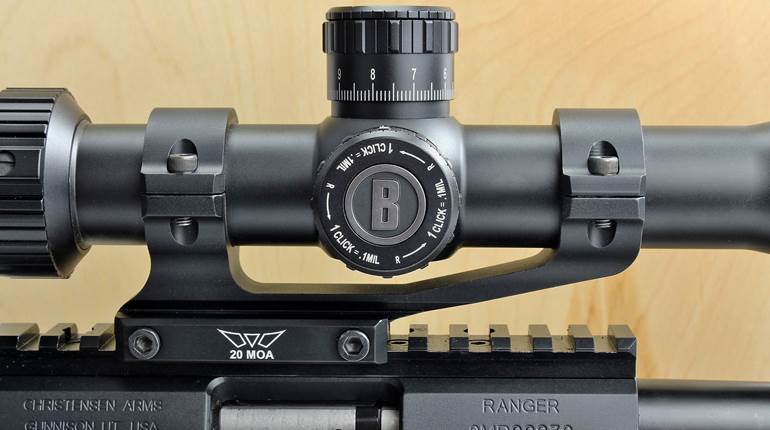
With all the hype about long-range shooting these days, a “short-range” shooter might feel a little left out. I’m a die-hard hunter who believes that getting close is as much a part of the hunting experience as is making every shot a clean vital-zone hit.
As a rifle rangemaster at one of the nation’s most popular shooting academies, I’ve seen and heard of my share of excellent shooters and hunters. One that garnered my particular admiration was a sheep hunter who, having gotten his Grand Slam, was working on international species-his and personal goal was to take every one at 200 yards or under. Of course, this could have been an exaggeration, the same as those stories of successful shots at a 500-yard running elk. How refreshing to hear someone speak proudly of hunting-not just shooting-skills.
Yes, I’m a bit of a snob when it comes to hunting. Here I am, decades into my shooting career-as a guide, client, and rifle rangemaster at the nation’s oldest private firearms training facility-and I just took my first shots beyond 500 yards.
As a hunter and a guide, I’m actually extremely proud of that, as I am rabidly against taking long-range shots at game. But as an instructor and rifleman in general, I knew this was a skill I needed to learn. My first thought when we were routinely ringing bells at 600 yards was, “Geeez, this is Fun! Why didn’t I do that before?”
I’d always wanted to learn more about shooting at longer distances, realizing that it would make me a better shooter and instructor. But knowing the equipment requirements (not to mention the taxing of my math skills) I’d put it off. But the stars had aligned, and I’d been able to secure the right equipment (rifle, courtesy TAC Drivers Custom) and partners. I had gotten together with six of my very best rifle-shooting buddies and invested in a private class at Gunsite Academy.
Every one of in this group of friends is a highly ethical hunter. I know this from either teaching, hunting with, talking to, and/or becoming friends with each of them. Yet each of us had felt the tug of whatever magic was involved in being able to “reach out and touch” those impossibly far and small targets. Gunsite was the perfect place for our initiation.
Since each of us was already a “good rifle shooter” by Gunsite standards, we dove right into the meat of long-range theory after the always-welcome introductory safety discussion.
We spent an intense day and a half of studying and applying the various theories and formulas needed to be able to set up our rifles and optics, determine target ranges, read trace in the air, and adjust for wind and other factors. A big part of that was shooting at various known distances so we could calculate the scope adjustments needed for those ranges, which, of course, would aid us as we continued beyond.
As Rangemaster Mike Moore had promised, once this was accomplished out to 600 yards (further for some of us, closer for others) by day two, taking 300-yard shots seemed like child’s play. We were now ready to get into longer-range territory.
One thing I appreciate about Gunsite’s teaching methods is the school’s emphasis on field application-rather than relying on software and devices, we were taught the “old fashioned” ways of determining and calculating the information we would need to make our shots. I felt we were ready to find this on our own in the field, even without the sophisticated battery of tools and programs that are often de rigueur for today’s riflemen. Those who wanted to move into more advanced technology and tools were welcome to do so, but Moore and Instructor Gary Smith made sure that we first understood how to use our equipment first.
As I’d suspected, the “brainier” side of long-range shooting is challenging, and for some of my classmates, all the more fun. From learning to estimate target size using our various reticles, to determining just what those “unknown” ranges were, to reading the wind by watching heat mirage, these finer but critical elements require knowledge, training and practice, and more practice.
Of course, this just made me wish I’d paid more attention in math class, but never mind. We were learning, and wishing we could test our newfound wind-reading skills!
On day three, we learned about field craft, and took a good look at some sniper skills that would come in handy for hunters. Then, since our group didn’t have the time (nor the agility) to put the Gunsite sniper stalk into practice, we moved onto other challenges.
Hiking to Sniper Ridge gave us one of the finest views-and shooting vantage points-that Gunsite has to offer, with numerous targets hidden in the rough, out to about 750 yards. Now we were in our shooting teams (most of us in pairs) rotating between being shooter and spotter.
One of the most interesting and unique aspects of long-range shooting is this team element-that is, the shooter/spotter pairing. Long-distance shooting, like all the specialized shooting disciplines, has its unique characteristics and demands. It requires understanding of certain elements of physics, ballistics and other worldly forces, as well as complete technical mastery of the shooting technique. Though these can be executed alone, the last critical ingredient, spotting your hits-and more important, your misses-cannot. You need a partner to watch your trace, spot your shot, read the wind and quickly convert these to come up with a specific aiming adjustment. If any of these is not quite right, you’re likely to miss. But, equally likely, so is your partner. (I’ve decided that being part of a sniper team might offer up some good lessons for successful marriage.)
At first, I thought this would be a great opportunity to lay blame for any misses at the feet of my partner. Soon, however, I learned that long-range shooting pairs really are teams, and one person feels just as responsible for a miss as the other. Of course, this made it all the more challenging and fun, and probably motivated all of us that much more.
Back on Sniper Ridge, since we had to find our own targets, most of the teams started close, at modest ranges of 500 yards or so. After about 30 minutes of muddling through the gyrations and mechanics, both tactical and social, of making those shots, the teams were ready for more distant challenges. Fortunately, Sniper Ridge allows for multiple shooting stations, and provides many opportunities to hone spotting, ranging, shooting and shot-calling skills. Soon, the 700-yard (or was that 820? Or was it 635?) targets were our new crack.
By our fourth and last day, we didn’t mind the lung-numbing climbs to the tops of Gunsite’s shooting simulators. We took over Long-Range Ridge, so we could search out and challenge our steely adversaries at up to 1,000 yards.
It was a whirlwind four days (really better done in five or more), but each of us left with new knowledge and tools that we could not have learned without delving into this long-range shooting realm. Some decided to take up the sport in earnest. Others were happy with this brief glimpse into a highly specialized and skill-demanding world. All of us felt like we would absolutely be better hunters and shots because of it-not because we would take longer shots, but because we understood more about the art of the rifle. A class like this gives you the opportunity to learn about and execute the techniques that are critical to successful long-range shooting, but just as important, helps you to consider how they apply to short-range work as well.
Just as knowing that you can shoot from an offhand-standing position at a moment’s notice brings confidence that enhances your shooting experience, while learning to make deliberate shots at distances that double and triple your personal norms will only make you better. Neither may be what you will execute in the field, but both will teach and prepare you for other scenarios, and will boost your ability to solve field problems.




































